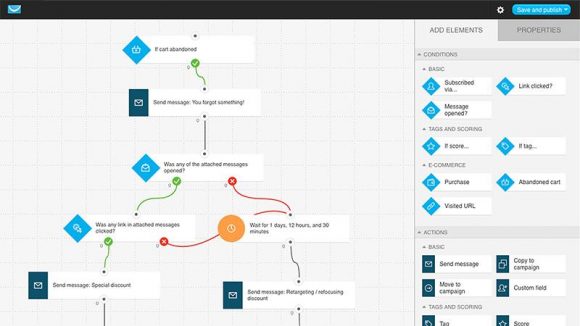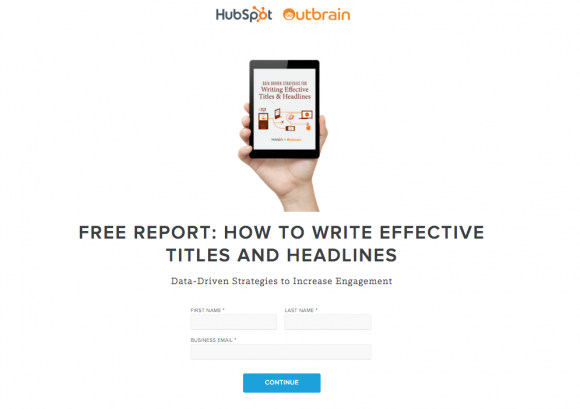Automating WordPress Website Marketing With GetResponse

Online marketing can become so complex, that it’s easy to find yourself sitting on your laurels, head in hands, thinking, “where am I going to find the time and expertise to grow my WordPress website business?”
Enter marketing automation. More to the point, the GetResponse marketing automation system, because it’s affordable for startups and entrepreneurs.
This article aims to show you how to use the system to automate your WordPress website marketing as far as possible.
Understanding your audience
The success of your online marketing efforts all boil down to understanding your target audience. If you don’t understand who you’re trying to sell to, you will lack the ability to speak their language, and to relate to the very people who would want your product or service. There is no way you can provide the right content on your website if you don’t know who you’re writing to.
There are two specific ways in GetResponse that allow you to conduct research about the people you aim to serve, and these are through a) surveys that people can complete, and b) website traffic tracking in order to understand user behavior.
Getting information about your audience through surveys
Free with the GetResponse marketing automation service, use surveys to find out more about your customers. You can either send the survey via email, or add it to your WordPress website.

The feature offers a sign-up page to collect email addresses, and a thank you page. You can also customize the survey by including your logo. The great thing when using this particular survey software, is that the collected data is analyzed, interpreted and put into nice graphs which make it easier for you to understand.
Now here’s the thing about surveys: in general, people will not complete them if they don’t feel as if they’re benefitting in some way, so you may need to offer some kind of incentive. Here are ideas to increase response rate.
When you use surveys for the purpose of understanding your target audience, these are the things you want to know:
- Basic information, like sex, location, age, income, etc.
- How they think. Try using questions to ascertain their personality type, attitude, morals, lifestyle, values and hobbies.
- Their pain points. Ask them about their needs, challenges and frustrations.
- Motivation to buy. What would make them buy? What would make them not buy? How will your product make their lives easier? What is the solution to their frustration?
- Where do they hang out? Ask them questions about which sites they use, which social networks they’re on, which forums they belong to.
Understanding visitor behavior with website traffic tracking
Knowing the behavior of your website visitors can be powerful. With the GetResponse website traffic tracking feature, find out who comes to your website, how often and why. Track the URL’s they visit, to find out what content is most useful to them.
Develop processes that are based on visitor buying habits, to nurture relationships. For instance, send targeted email to people who access certain pages. This means a higher chance of conversion, because if they are already interested in a certain page’s content, you know they will be interested in XYZ too.
With website traffic tracking, you can optimize conversions based on conditions, filters and actions.

Plan to get back lost sales
Ecommerce WordPress websites lose almost ¾ of their sales due to various reasons. That’s a lot of sales.
Research into “abandoned shopping carts” shows that there are quite a number of reasons that people ditch their carts, but if abandoned shopping carts are true for you, you need to find out why, and then work on the problem so that it’s not a problem anymore.
Planning intelligent processes with the workflow planner
There’s another route you can take or rather, use once you’ve identified the root cause of lost sales… When you use the GetResponse abandoned shopping cart feature, you can develop a planned and automated process flow using conditions, actions and filters, in order to win back lost sales.

Easily set up an automated process flow to retrieve lost sales.
And you don’t just need to be an ecommerce store to do so. Automated process flows can be set up on any page URL where the Javascript is placed. So practically speaking… if your subscriber clicked on a pricing page URL, but did not select any service options to buy, you can set up an automated process that emails the person within 15 minutes, with an email that says something along the lines of, “We saw you ditched the pricing options. Please let us know if you need help with something, by following this link.”
Hook ‘em for later
The reason so many people fail at online marketing, is because their expectations of making millions in the first month, are not fulfilled.
It’s a known fact – to the marketers who have been at it for a while – that when someone first lands on your website, there is an exceptionally minimal chance of them buying the first time. Which is why email marketing is the anchor of digital marketing.
And the holy grail of email marketing? Soliciting email addresses by getting people to subscribe to an email list.
There are two phrases you’ll need to become familiar with (more detail on each one later):
- Call to action – this is some kind of instruction to your website visitor, in order to get them to take some type of action.
- Optin form – this is a form that contains fields for the user to enter their email address.
Adding calls to action to your website and landing pages
The whole point of having a WordPress website for business, is to make money. If you’re smart, you will, or have been, adding search engine optimized content to your website, in order to draw more traffic.
But the one thing that many WordPress website owners neglect to do, is to add a call to action on every page.
For the sake of clarity, this is a typical call to action from HubSpot and Outbrain:

Here’s another one from another business:

Where should you put calls to action? They should go on every blog post and every page of your website, or add them as a pop-up.
The kind of call to action will depend on your offerings. You could offer a free e-book download, checklist, free trial period, “add to cart”, and so on. Whichever one you choose, for the optin form to be effective, you need to answer these questions:
- Who is your ideal subscriber?
- What is he trying to accomplish?
- What struggles will he have?
- What simple resource can you create?
There are various methods you can try; use whatever is best for your site. For instance, you could design an image in PowerPoint, and add it to a blog post, like this one which was added to the bottom of a blog post:

Or you could simply add the GetResponse optin form, where people enter their email addresses directly, like this:

Adding an optin form to your WordPress website
The first step is to add and activate the “GetResponse Integration v 3.0” WordPress plugin, which will allow you to add an optin form to your site using a widget. Then simply drag and drop the web form widget into the sidebar or footer area. The best position for it is in the sidebar above the fold.

Anatomy of a website: the opt-in form should be placed in the sidebar, above the fold.
Image Credit: TimeRichWorryFree
When designing your optin form, keep this in mind:
- Provide a strong headline according to the pain of your target audience.
- For the rest of the wording on the form, you need to offer a solution to your audience’s pain, and set some basic expectations.
- You may want to include a visual like a 3D book cover image.
Using email marketing to build trust
It goes without saying that you need an automated email marketing process, from which all your marketing activities are based around. You’ll use emails for the webinars you host, to retrieve lost sales, and of course, the email addresses given by your subscribers through optin forms on your website and landing page, will all be sent to the GetResponse system, where you’ll manage them.
But you’ll need to center them around a concrete strategy, and this is also where the workflow planner can be of great assistance, so you can keep track of your email list processes.
The other important element, is sending emails that are of value to each subscriber, because that will increase email open rates, and you’ll find that those people will be more likely to convert into customers later down the road.
You’ll need to develop informational emails, sent at certain times and intervals, before you send any sales types emails.
Engage and add value
Adding value to your prospective buyers is central to making money online. It is just about impossible to make a cold sale nowadays, and even more so online where people can’t see the faces who are trying to sell them products and services.
Because of this lack of trust, we need to work on developing trust and credibility with those who visit our websites, and to do this, online marketers use email marketing. Another excellent way of adding value to people’s lives is by offering informational webinars.
Webinar marketing as a lead generation tool
GetResponse offers a total webinar marketing function, designed specifically as a lead magnet, on a par with any of the best webinar software available, but also with pre-designed webinar registration landing pages, email invites and reminders.
When done properly, webinars are a great way to get new subscribers, and to add real value to current customers.
When the webinar is over, you can download the recording and upload it to YouTube to act as more content for your brand.
Learn how to grow your business with marketing webinars.
Get visitors to do what you want them to do
In the world of online marketing, you’ll more than likely need not only a website, but landing pages. The difference between them, is that websites are for information purposes, while landing pages work to convert visitors. Landing pages contain no distractions, and are targeted with the focus on getting the visitor to do one specific thing.
Landing pages for increased conversions
Using a landing page is often essential to maximizing the success of getting people to take the action you want them to take. You can either direct traffic to a landing page from a button on your WordPress website, or send traffic directly to your landing page from ads. Either way, the landing page is probably going to include an optin form.
The easiest way to organize all this is by using the GetResponse landing page builder, which is already pre-designed. That’s a good thing, because all the elements need to work together to speak to the visitor, subtly encouraging him or her to do what you want him or her to do. All you’ll need to do is tweak the landing page copy.
Remember that consistent branding is important, so you don’t confuse visitors, so try to keep the same look and feel from ads to website to landing page to emails. Use your logo, the same colors and the same fonts, like this brand has done:

Keep your branding consistent, from ad to website to landing page to email.
Image Credit: InspirationFeed
Summary
Unfortunately, there are certain things you have to do online if you want marketing success, but it is possible to streamline many of the tasks, and to find smarter ways of doing things.
Using the GetResponse marketing automation platform, you can automate much of your WordPress website marketing by:
- Understanding your target audience through surveys, and the behavior of website visitors by tracking their actions.
- You can make more money by understanding what makes people abandon the shopping cart, and plan automated processes to get them back.
- Because you need to “groom” prospects over time, use calls to action and optin forms on your website and landing pages and email marketing to build trust.
- Use landing pages for higher conversions and webinars as a lead generation tool.


Thanks for the post. It seems like GetResponse can get a lot of work done with its marketing automation.
I will also try! To going to crowd source it from the website named professional java